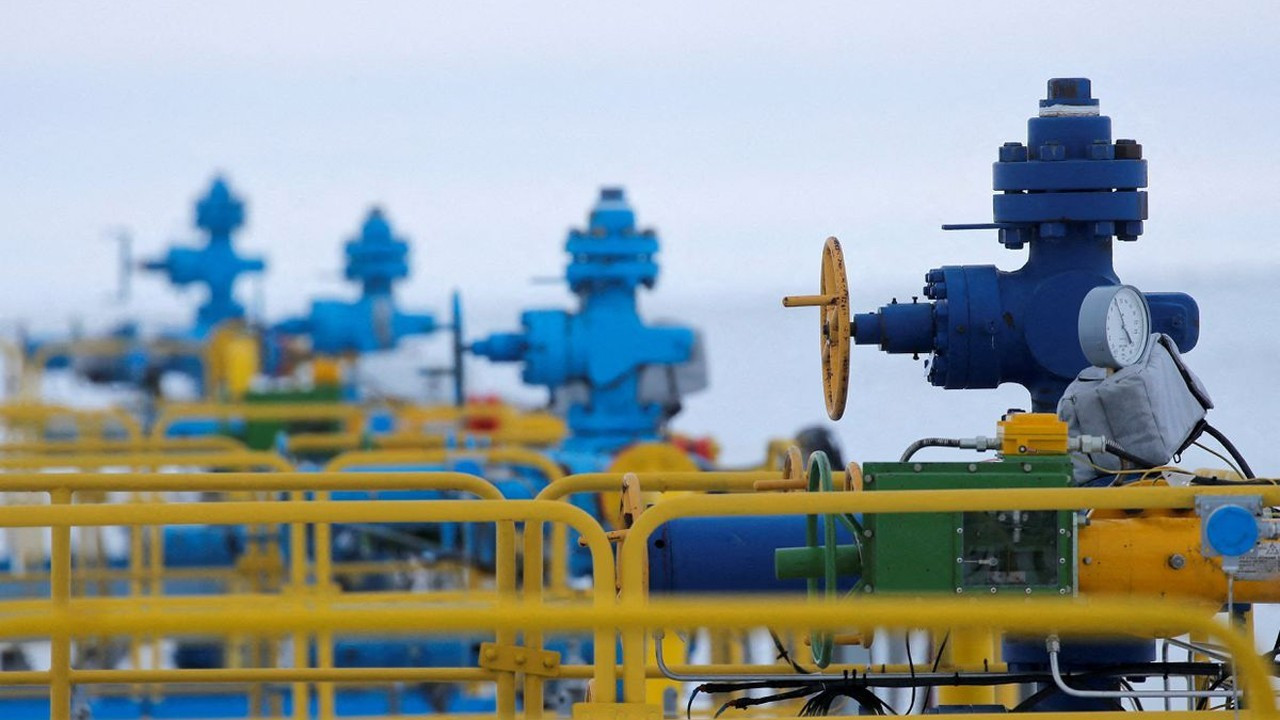
The energy crisis in the European Union (EU) countries, which have imposed various sanctions on Russia, has deepened further with the deactivation of the Nord Stream 1 and the not yet active Nord Stream 2 natural gas pipelines, which provide natural gas flow to Europe. Increasing the capacity of the Southern Gas Corridor, which was built to deliver gas resources in the Caspian Sea to European markets, is among the most likely alternatives for European countries that accelerate their imports of liquefied natural gas (LNG) in order to meet their natural gas needs as soon as possible. The Trans-Anatolian Natural Gas Pipeline (TANAP), which carries Azerbaijani gas, which is the “backbone” of the Southern Gas Corridor, to Turkey and to Europe via Turkey, currently carries 16 billion cubic meters of gas annually, 6 billion cubic meters in Turkey and 10 billion cubic meters in Europe. Starting from Posof on the Georgia-Turkey border, TANAP is connected to the Trans Adriatic Pipeline (TAP), which carries gas to European countries on the Greek border, passing through 20 provinces, 67 districts and 600 villages. It is expected that the works will start in line with the decision taken regarding the realization of the said increase in TANAP, which is designed to increase its capacity up to 32 billion cubic meters. Taking into account that Europe purchases approximately 155 billion cubic meters of natural gas from Russia annually, the increase in capacity is expected to be a significant substitute. In order to increase the volume of gas to be transported in the Southern Gas Corridor, additional reserves and source countries are needed. John Roberts, Senior Partner at the consulting company Methinks, said that the European Commission should first consider where the gas will be sourced from regarding the capacity increase in the Southern Gas Corridor. “If the doubling of the capacity means an extra 10 billion gas supply, all that is known for now is that Azerbaijan can produce an extra 5 billion cubic meters by 2027. There is no sign that it can exceed this amount,” Roberts said. Additional pipeline and capacity expansion investments are needed to increase the gas sent to Europe from Azerbaijan, which has 1.3 trillion cubic meters of proven natural gas reserves. Baku also needs to seriously increase its natural gas production.
Two possibilities in the supply of natural gas: Turkmenistan and Iraq
Pointing out that the Southern Gas Corridor basically consists of three sections, Roberts said that the first two sections have an annual capacity of 16 billion cubic meters and the last section has a capacity of 10 billion cubic meters. Roberts stated that the issue of “doubling the capacity” as pointed out by the EU is perceived as increasing the first part to 32 billion cubic meters and the second part to 20 billion cubic meters. However, stating that the additional capacity depends on how much natural gas is needed, Roberts said, “If you are going to double the amount, you do not have only Azerbaijan in mind to supply the gas. You are looking beyond Azerbaijan, which means Turkmenistan.” Stating that there are two possibilities for the supply of natural gas apart from Azerbaijan, Roberts said, “The first and most obvious one is Turkmenistan. Because of the abundance of natural gas resources and its proximity to Azerbaijan, Turkmenistan gas can be connected to the system very quickly.” Pointing to Northern Iraq as the second possibility, Roberts said: “The important point in both of these elements is that they do not have to be transported to Europe. If they can enter Turkey and improve Turkey’s gas balance, that is, Turkey’s need for LNG imports. “If they can reduce it, that’s enough. Thus, Turkey imports less energy and there is a possibility to import more LNG for the EU. There is a possibility that the Northern Iraq region will start exporting perhaps 5 billion cubic meters to the south of Turkey in 2 or 3 years. If it does, this gas will be produced.” It doesn’t really need to go into the Southern Gas Corridor, it replaces gas from other sources.”
Turkey, potential natural gas gateway to the EU
Emphasizing that Turkey’s geographical location provides a great advantage for it to become a natural gas hub, Roberts said that Turkey, which is on the transit route of pipelines, has a key importance for the Southern Gas Corridor project. Turkey and Iraq’s work on natural gas has been going on since the mid-1990s. With the project, it is aimed to bring the natural gas to be produced in Iraq to Turkey via a pipeline, to be used for domestic consumption and to be transmitted to European markets via international natural gas pipelines. However, developments in the region and the political environment in Iraq negatively affect the implementation of the project. Iraq, which is one of the largest oil producing countries of OPEC, has to burn large amounts of natural gas that comes out with oil because a commercial basis cannot be provided. According to the World Bank’s 2022 Global Gas Flaring Tracking Report, Iraq burned 18 billion cubic meters of gas last year. This amount roughly corresponds to the planned capacity increase of the Southern Gas Corridor. With an annual natural gas consumption of 60 billion cubic meters, Turkey draws attention with its infrastructure investments as well as its resource and route diversity in order to ensure energy supply security. Currently, Turkey has a strong infrastructure with a total of 7 international natural gas pipelines, 4 LNG facilities, 2 of which are floating storage and gasification units, and 2 underground natural gas storage facilities.
